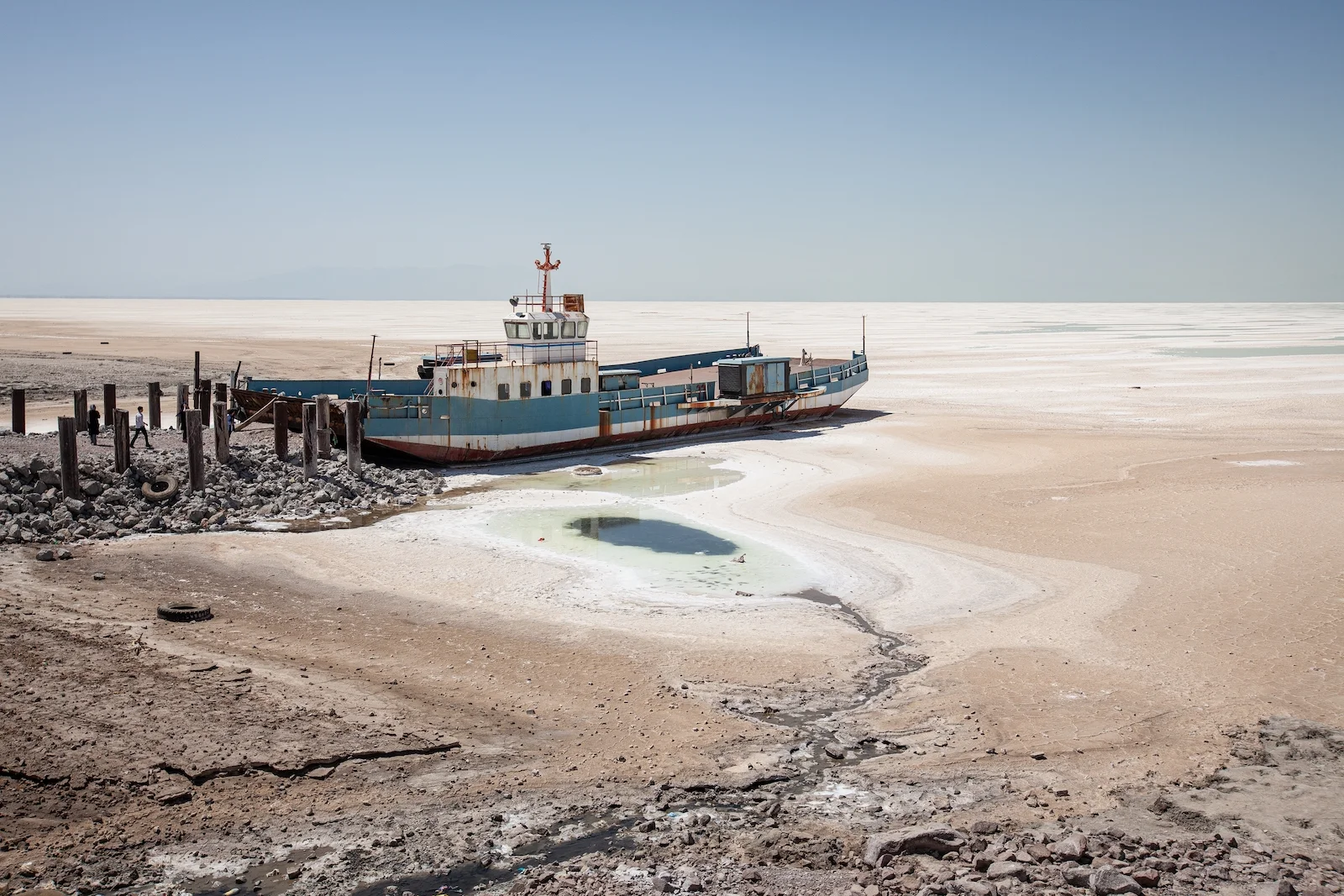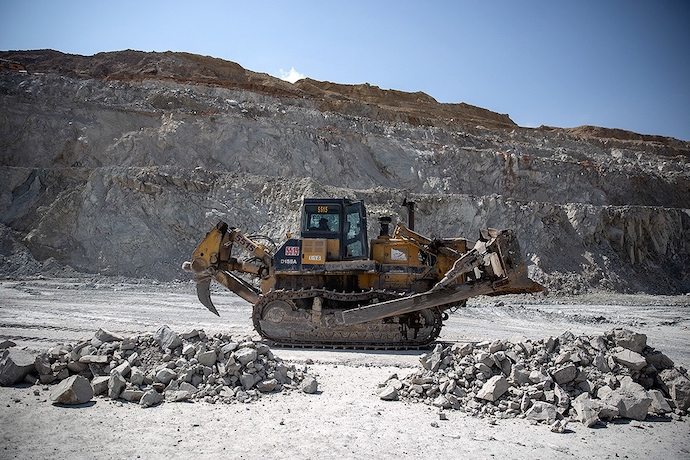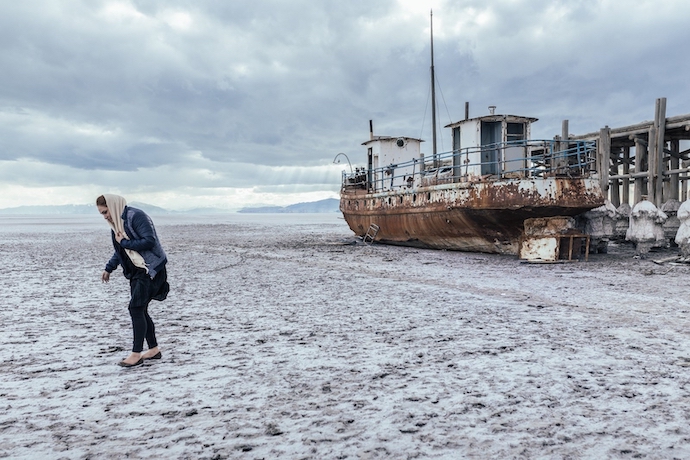
Iran’s Ecological Neglect and Its Political Cost
In the northwestern provinces of Iran—East Azerbaijan, Ardabil, Hamadan, Qazvin, and Zanjan—ethnic Azerbaijanis comprise the country’s largest non-Persian minority, estimated at 35 to 40 percent of the population. Yet their demographic strength has not translated into political inclusion or cultural recognition.
For generations, these communities have been systematically marginalized—excluded from governance, denied education in their native tongue, and erased from national media narratives. Today, this marginalization extends beyond culture and politics into the terrain itself. Environmental neglect and regional underdevelopment have become another frontier in the quiet struggle over identity and belonging.
From the drying bed of Lake Urmia to poisoned aquifers and unregulated mines, a stark pattern is emerging. Environmental degradation is reinforcing ethnic disenfranchisement. What was once a crisis of language and representation has grown into a systemic denial of basic rights—clean water, arable land, breathable air.
A recent report by Eurasia Review lays bare this convergence of cultural and ecological dispossession. It chronicles decades of repression against Azerbaijani linguistic rights, underrepresentation in state institutions, and the state’s consistent neglect of environmental catastrophes across its provinces. The emblem of this crisis is Lake Urmia, once the Middle East’s largest saltwater lake and now a desiccated shell of itself. Its collapse is not just an ecological failure, but a potent symbol of how environmental policy has become a proxy battlefield for ethnic disenfranchisement.

Iran’s water crisis is a national dilemma, but its burden is borne unequally. In Azerbaijani-majority provinces like East Azerbaijan, Zanjan, and Ardabil, entire communities face water shortages that have reached existential levels. In the Khodabandehlu region alone, agricultural livelihoods are vanishing as wells dry and clean water becomes a luxury.
Tehran’s pursuit of national food self-sufficiency has led to excessive groundwater extraction and reckless dam construction. These top-down policies, enforced without regional input, have left Azerbaijani regions with depleted resources and little recourse. A farmer in East Azerbaijan put it plainly: “You can’t wash, you can’t farm.” And many farmers have washed their hands and abandoned farming altogether.
Tehran’s infrastructure priorities further illustrate the inequality. Persian-majority provinces receive concentrated investment in water systems, while Azerbaijani areas are left without basic irrigation or filtration. As Diplomatic Courier observed, this disparity is no accident. It reflects a longstanding fear in Tehran that culturally and linguistically distinct provinces might one day demand autonomy—or worse, align more closely with Azerbaijan.
That fear has translated into policies of deliberate neglect. In a formal complaint to the EU’s High Representative for Foreign Affairs, the European Parliament referred to Iran’s Azerbaijanis as “second-class citizens,” citing both cultural repression and environmental injustice. Modern Diplomacy, in a March dispatch, echoed this concern, characterizing Tehran’s approach as one of “unfair water management strategies” that deepen inequality.
Climate change may exacerbate these shortages, but it is state policy that has weaponized them.
Nowhere is the convergence of ecological collapse and ethnic marginalization more evident than at the Sungun copper mine in East Azerbaijan. The open-pit operation, largely ignored in global media, has devastated farmland, contaminated water supplies, and saturated the soil with toxic elements like arsenic, cadmium, and copper. Community sources describe a slow-motion disaster where crops no longer grow, and water is no longer safe.
A 2024 study on pollution near Iran’s copper mines doesn’t name Sungun directly but maps a broader pattern of environmental degradation in East Azerbaijan. The consequences are predictable: poisoned aquifers, collapsing biodiversity, and ruined livelihoods.
Crucially, these outcomes are avoidable. Iran’s mining sector frequently ignores environmental impact assessments. According to Environmental Geology, enforcement is weakest in ethnic minority regions, where local communities have little political leverage to resist destructive development. The Azerbaijani Turks in East Azerbaijan have watched as their concerns are sidelined and their activists silenced, often under surveillance or legal threat.
Sungun is not an anomaly—it is a case study. The pattern is extractive, authoritarian, and racially coded. Farms fail, families leave, and what remains is a hollowed-out economy built on short-term profit and long-term decay.

Between East and West Azerbaijan lies what remains of Lake Urmia—a shrinking saline body that once ranked among the world’s largest. Over the last two decades, it has lost more than 90 percent of its surface area, transforming into a sprawling bed of salt and dust. In 2024 alone, water levels dropped by 62 centimeters.
Yes, climate change plays a role. However, according to environmental reports and scientific assessments, the real culprit is man-made: dozens of upstream dams, poor irrigation practices, and reckless water diversion for agricultural purposes. A BBC investigation in 2021 revealed that over 60 dams have been built in the lake’s watershed, many without any environmental oversight.
The fallout is immense. Migratory birds are gone. Dust storms now fan out across the region, triggering respiratory illness and contaminating crops. The World Bank has warned that Urmia’s decline is not just a local crisis but a regional ecological emergency.
For Azerbaijani Turks, the lake’s degradation is personal. It is part of their cultural memory and regional pride. Protests in Tabriz and Urmia over the lake’s condition have drawn heavy police responses. Activists have been jailed for demanding its restoration.
While the previous Rouhani administration announced a multibillion-rial recovery plan in 2015, the effort quickly lost steam under successive governments. Locals cite corruption, political posturing, and declining transparency. Despite the rhetoric, overfishing continues, and satellite imagery paints a grim picture: recovery remains elusive.
Urmia is not merely drying—it is being forsaken. And that forsaking is felt most acutely by those who see in its collapse the erasure of their past and future alike.
If Urmia is the symbol, the Aras River is the warning. This transboundary waterway flows along Iran’s border with Armenia and Azerbaijan and supplies drinking and irrigation water to East Azerbaijan and Ardabil. But today it has become a reservoir of toxins—radioactive and chemical—thanks to upstream industrial waste.
A Geopolitics investigation linked the river’s contamination to two primary culprits: Armenia’s Metsamor nuclear plant and the mining giants of Zangezur and Agarak. The Okhchuchay and Kharchevan tributaries carry their waste directly into the Aras. Meanwhile, Iran’s own Sungun copper mine has worsened the problem with lax waste disposal practices.
The public health toll is mounting. Ardabil has Iran’s highest rate of gastrointestinal cancers, and officials from Ardabil University of Medical Sciences have openly linked this to water contamination. A 2023 Iran Focus report confirmed that over a million people are at risk.
Yet Tehran remains hesitant. While officials have lodged quiet complaints with Yerevan, enforcement is weak—likely out of geopolitical caution. For Azerbaijani communities downstream, this silence reads as complicity.

Local activists call it a “toxic collaboration,” and the phrase has stuck. It captures the despair of communities who feel that their health and future are disposable in the face of geopolitical calculus. Experts warn that bioaccumulation of these toxins could result in multigenerational health consequences and biodiversity collapse across the Caspian basin.
Although Iran and Armenia signed a memorandum in 2023 to tackle the crisis, little public progress has emerged. What’s needed is not just bilateral diplomacy but a multilateral environmental initiative involving the United Nations Environment Programme (UNEP), the UN Human Rights Council, the World Health Organization (WHO), and regional stakeholders. Anything less risks entrenching a slow-moving catastrophe with no borders and no accountability.
What links these crises—from dried lakes to poisoned rivers—is not just geography or coincidence. It is the systemic exclusion of a people from the decisions that shape their land, their water, and their lives. Iran’s Azerbaijani regions are suffering not just from environmental decay but from the political conditions that allow that decay to metastasize. The environmental is now political—and vice versa.
As Tehran expands infrastructure elsewhere and courts regional power status, its own peripheries rot. And as long as minority voices are kept from the table, those peripheries will continue to burn, dry, and disappear.
Unless urgent action is taken, the Aras River may soon become more than an ecological tragedy—it could be a permanent source of instability and disease, a case study in how environmental catastrophe becomes ethnic grievance.
What’s unfolding across Iran’s Azerbaijani provinces is not a series of isolated environmental failures. It is a pattern—a systemic marginalization woven into the fabric of governance, resource management, and national development. The recurring themes in East Azerbaijan, Ardabil, Zanjan, and beyond—dried riverbeds, poisoned aquifers, collapsing infrastructure—are symptoms of a deeper design: a state that has long treated its largest non-Persian minority as peripheral in both geography and policy.
The Iranian government bears direct responsibility for the escalating ecological and cultural risks in these regions. The drying of Lake Urmia, water shortages in rural districts, and the toxic footprint of copper mines like Sungun reflect a development model that privileges national productivity over regional sustainability. This is not an accidental byproduct of modernization—it’s the outcome of a centralized strategy that too often sacrifices the margins for the sake of the core. Though Iran’s Constitution frames environmental protection as a public duty, enforcement is sporadic and weakest in minority-populated areas.
These environmental crises must no longer be siloed as technical problems—they are, at their core, human rights issues. Denying access to clean water, allowing farmland to be rendered barren, and enabling cross-border river contamination are not just ecological oversights; they are acts of environmental discrimination. It is time for global institutions—the UNEP, the UN Human Rights Council, the WHO—to treat environmental marginalization as a dimension of structural inequality. When environmental degradation follows ethnic and geographic fault lines, the implications are political as much as ecological.
Addressing this requires a diplomatic pivot. The pollution of the Aras River—spurred by Armenia’s industrial runoff and exacerbated by Iran’s mining practices—demands coordinated international oversight. Current bilateral complaints and memoranda are insufficient. The region needs a binding, multilateral environmental treaty to monitor and regulate shared water resources. Such a framework should include Iran, Armenia, and Azerbaijan, ideally under the supervision of the United Nations. Without enforceable cross-border standards, the river will remain a conduit for both toxins and distrust.
But diplomacy is not enough without internal reform. Iran must decentralize its environmental governance and empower local civil society, particularly in its Azerbaijani provinces. The most persistent environmental injustices stem from the exclusion of local voices. Community leaders, independent environmental scientists, and Azerbaijani civil society groups need more than legal permission—they need resources and protection. Their participation in regional planning should be seen not as a threat to national unity, but as a safeguard against national fracture.
This is about more than justice. It is about national stability. Without inclusive governance and shared prosperity, Tehran risks deepening the fault lines that divide Iran’s multiethnic society. The country is already grappling with economic hardship, geopolitical tension, and popular discontent. Ignoring the grievances of its Azerbaijani population—both cultural and environmental—may further inflame the unrest.
The stakes are not abstract. Failing to restore Lake Urmia, regulate exploitative mining, or decontaminate the Aras will accelerate rural collapse, trigger new waves of migration, and deepen disillusionment with the central government. The consequences will be felt not just in Azerbaijani provinces but across Iran’s social and political fabric.
What’s happening in Iran’s northwest is not the random convergence of environmental breakdown and administrative failure. It is the predictable result of a governance system that has neglected its periphery for decades. In East and West Azerbaijan, Zanjan, and Ardabil, ecological devastation mirrors the lived experience of political exclusion and cultural erasure.
The death of Urmia, the exhaustion of rural water systems, and the toxic footprint of mining operations are not isolated local events. They are markers of a national policy that fails to integrate peripheral communities into the broader vision of development and governance. For Iran’s Azerbaijani Turks, environmental degradation is not simply about lost farmland or polluted air—it is about a deeper dispossession that spans generations.
The implications are immense. Environmentally, the crises endanger food security, water access, and regional biodiversity. Politically, the government’s inertia risks alienating millions. Geopolitically, the mismanagement of shared resources like the Aras River could ignite wider tensions across Iran’s already fragile borders.
Iran must fundamentally rethink its posture toward minority regions. Environmental policy cannot be severed from political inclusion. A truly sustainable Iran will require more than new dams or mines—it will require justice, participation, and a reckoning with the inequities that define its governance.
Without such reforms, the environmental and cultural crises gripping Iran’s Azerbaijani provinces will not remain contained. They will echo outward—through Iran’s social fabric, across its borders, and into the very legitimacy of the state itself.
